Three Armenian Beaded Altar Frontals
Votive Offerings to the Church of Saint Elias
Ottoman Empire or Caucasus, circa 1880–1915
This rare ensemble consists of three liturgical antependia (altar frontals or altar hangings) made of deep red fabric (probably wool cloth or fine felt), entirely hand-embroidered with tubular glass beads. Each piece presents a symmetrical and carefully arranged composition centered on a large central floral motif, framed by two facing peacocks, set within a richly stylized vegetal design.
These textiles belong to a well-established liturgical tradition in Armenian parishes of the Ottoman Empire and the Russian Caucasus in the late 19th century. Offered by members of the congregation, they were hung in front of the altar on major religious feast days, notably Christmas, Easter, the Assumption, or the commemoration of the martyrs.
Materials: deep burgundy cotton fabric, tubular glass beads (grey, white, blue, bronze), dyed cotton thread, textile appliqués (notably for the birds).
Technique: each bead is individually sewn following precise outlines. The density and regularity of the beading suggest skilled workmanship, probably from a women’s parish workshop.
Condition: generally good overall condition, with localized gaps (missing beads, small holes, fraying), and an authentic patina.
The beads were most likely imported from Bohemia or Italy (Murano), through the well-established trade routes supplying ecclesiastical handicrafts in the East.
The embroidery style is highly characteristic of Armenian production from the eastern Ottoman provinces (Van, Mush, Bitlis) or from the Karabakh region.
The decorative layout is based on a symbolic and rigorous structure:
The peacocks, with black and gold wings, are Christian symbols of resurrection, immortality, and paradise. They frequently appear in Armenian religious manuscripts, sculpture, or textiles since the Middle Ages.
The central floral motif, shaped like a stylized lily or a three-branched flower, can be interpreted as a representation of the Trinity, or as an evocation of the Tree of Life.
The secondary vegetal ornamentation (palmettes, scrolls, six-petaled flowers) follows a highly codified vocabulary, inherited from Armenian decorative arts and influenced by Ottoman motifs.
The mirrored arrangement, symmetry, and scalloped lower edge are typical of the structure of Armenian liturgical altar frontals produced in rural regions between 1850 and 1915.
Each of the three pieces bears inscriptions in uppercase Armenian letters, embroidered in white beads and perfectly legible. They are organized into two areas:
In the lateral cartouches (to the left and right of the central motif):
ԸՆԾԱՅ ՍՈՒՐԲ ԵՂԻԱՅԻ ԵԿԵՂԵՑՒ
“Offering to the Church of Saint Elias”
This is a dedicatory formula, commonly found on Armenian votive objects, addressed to a local church dedicated to Saint Elias (Եղիա), a prophetic figure venerated in Armenian Christianity.
In the central vertical zone:
ՏԵՐՈՑԱԶՆ ՅԻՇԵԱԼ Է ՏՈՒԻ
“May the Lord remember the donor”
This liturgical prayer is typical of inscriptions found on votive crosses, khachkars, or textile objects intended for cultic use.
These pieces most likely date from the late 19th or very early 20th century (circa 1880–1915), a time when Armenian communities still lived in the Ottoman Empire and in the Caucasian provinces under Russian rule. The practice of making votive offerings to the church was then very much alive, especially in medium-sized towns and villages where the faithful would commission or create textile works themselves to adorn altars in glory to God or in memory of a deceased person.
The Church of Saint Elias mentioned on the pieces cannot be linked to any known cathedral today. It was most likely a rural parish or neighborhood church, now lost, of which few traces remain following the destruction of Armenian religious buildings after the genocide of 1915.
This type of piece has become extremely rare, as war, exile, and abandonment have led to the disappearance of the vast majority of these votive textiles. Examples preserved in museums (Matenadaran, Armenian Museum of France, ecclesiastical collections) display very similar characteristics, both in their layout and in their beadwork style.
These three altar frontals form a rare and cohesive ensemble, reflecting the religious fervor and refined Armenian textile craftsmanship of the late 19th century. They bear witness to Armenian popular devotion, the richness of embroidered traditions, and a Christian Eastern art form that has now almost entirely vanished.
Երեք մարգարիտագործ սրբալուսին
Նվիրական տեքստիլներ Սուրբ Եղիայի եկեղեցուն
Օսմանյան կայսրություն կամ Կովկաս, մոտ 1880–1915 թթ․
Այս հազվագյուտ հավաքածուն բաղկացած է երեք հայկական լիտուրգիական սրբալուսիններից, պատրաստված մուգ կարմիր կտորից և ամբողջությամբ ձեռքով ասեղնագործված ապակյա խողովակաձև մարգարիտներով։
Յուրաքանչյուր կտոր ունի համաչափ կառուցվածք՝ կենտրոնում ծաղկային մոտիվով, երկու սազերով, զետեղված ոճավորված բուսական զարդապատկերով։
Այս տեքստիլները կապված են լիտուրգիական մի ավանդույթի հետ, որը կենդանի էր Օսմանյան կայսրության և Կովկասի հայկական եկեղեցիներում 19-րդ դարի վերջին։
Դրանք ընծայվում էին հավատացյալների կողմից և կախվում էին սրբատախտակի առջև՝ Սուրբ Ծնունդի, Զատիկի, Վերափոխման և նահատակների հիշատակի տոներին։
Օգտագործված նյութերն են՝ բորդո բամբակյա կտոր, ապակյա մարգարիտներ (սպիտակ, մոխրագույն, կապույտ, բրոնզե), ներկված բամբակյա թել և տեքստիլ հավելումներ։
Յուրաքանչյուր մարգարիտ կարվում էր առանձին՝ ճշգրիտ ուրվագծով։
Աշխատանքի որակը վկայում է հմուտ վարպետության մասին, հավանաբար՝ ծխական կանանց արհեստանոցից։
Գրությունները, ասեղնագործված սպիտակ մարգարիտներով, պարզ կարդացվում են։ Կողային մասերում գրված է՝
«Ընծայ Սուրբ Եղիայի եկեղեցուն», իսկ կենտրոնում՝
«Թող Տերը հիշի նվիրաբերին»։
Այս արտահայտությունները բնորոշ են հայկական ընծայական գործվածքներին և կրոնական կիրառությանն ուղղված են։
Սազերը խորհրդանշում են հարություն և անմահություն, իսկ կենտրոնական ծաղիկը՝ Սուրբ Երրորդություն կամ Կենաց ծառ։
Բուսական զարդապատկերները, ինչպես պալմետները և ոլորուները, ժառանգված են հայկական դեկորատիվ արվեստից՝ օսմանյան ազդեցությամբ։
Այս սրբալուսինները, ամենայն հավանականությամբ, պատկանել են մի փոքր գյուղական եկեղեցու՝ նվիրված Սուրբ Եղիային։
Այդ եկեղեցին, այսօր վերացված, հնարավոր է, ոչնչացվել է 1915 թ․ Հայոց ցեղասպանության ժամանակ՝ ինչպես բազմաթիվ այլ հայկական հուշարձաններ։
Այս տեսակի գործվածքները մեր օրերում շատ հազվադեպ են։ Թանգարաններում պահվող օրինակները ցույց են տալիս շատ նման կառուցվածք և ոճ։
Այս երեք կտորները ներկայացնում են ներդաշնակ և արժեքավոր ամբողջություն՝ վկայություն հայկական ժողովրդական աստվածպաշտության։



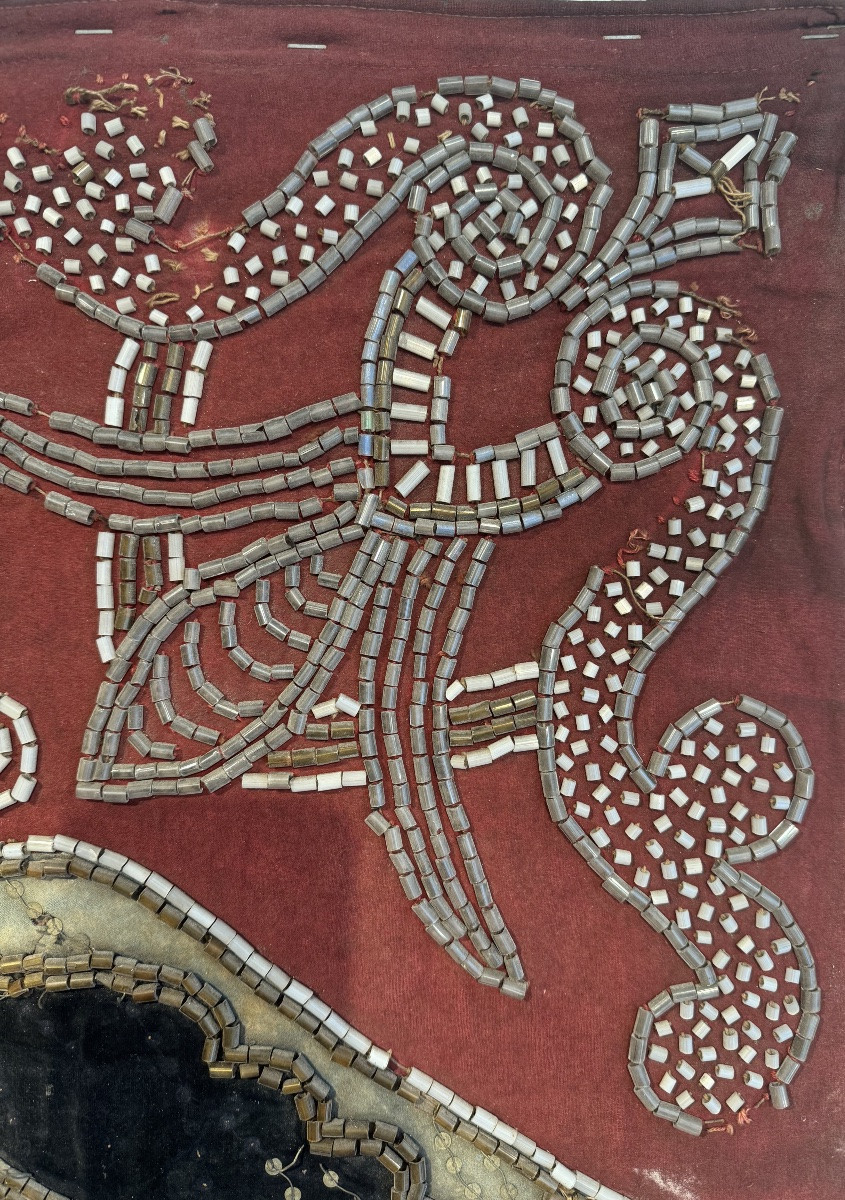




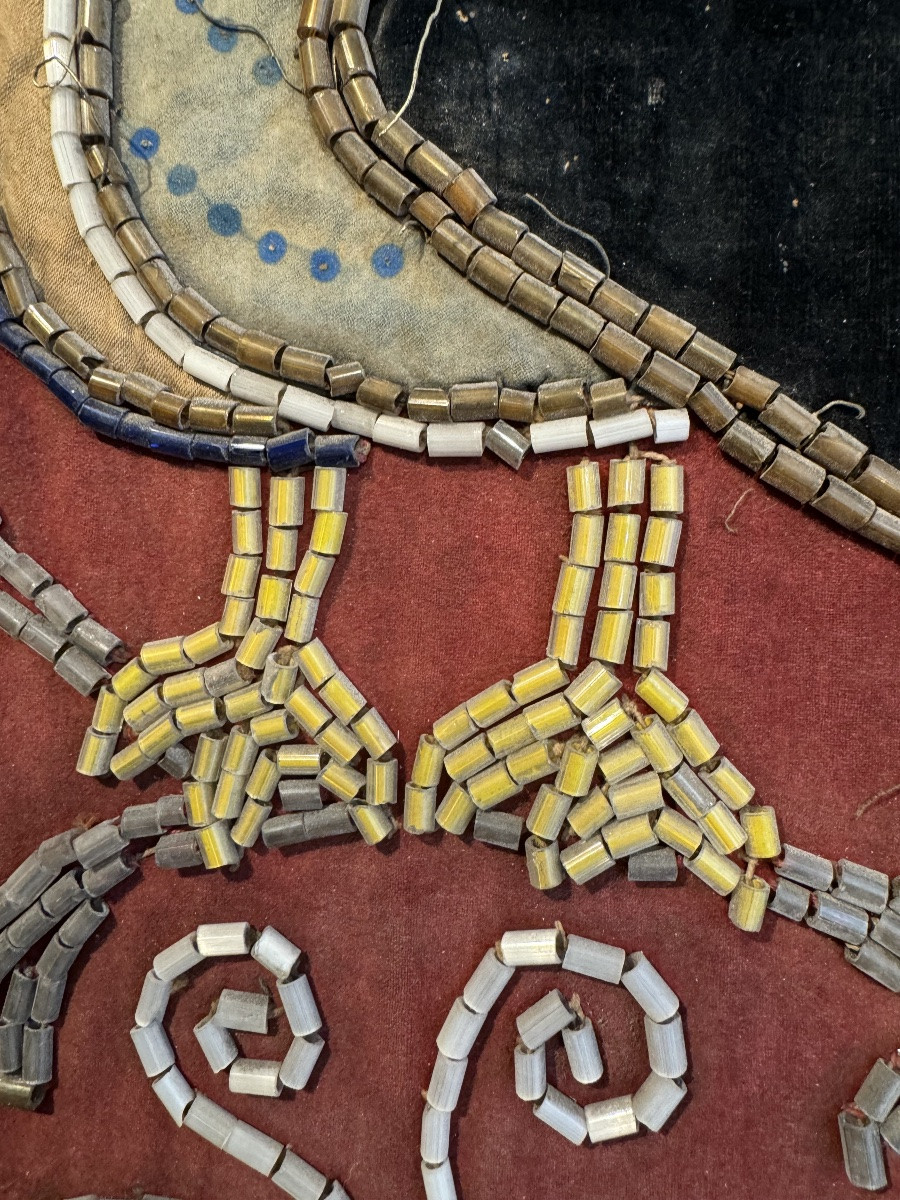


















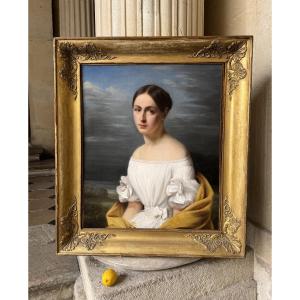
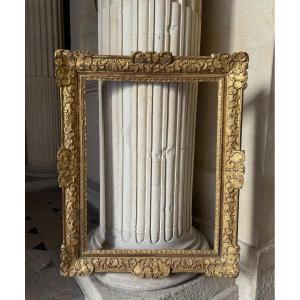

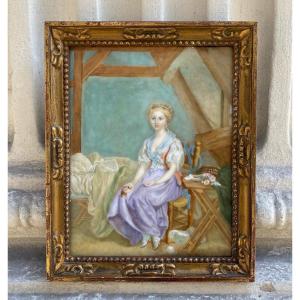
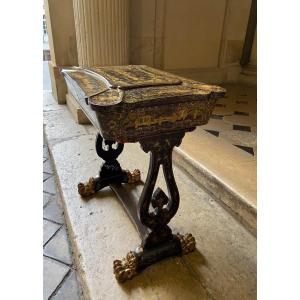
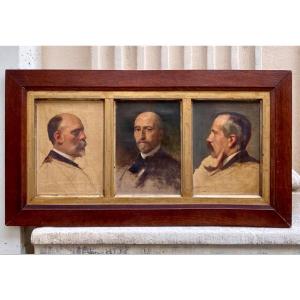




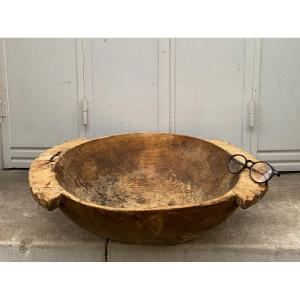



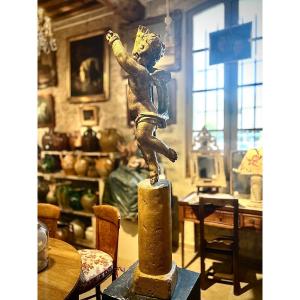





 Le Magazine de PROANTIC
Le Magazine de PROANTIC TRÉSORS Magazine
TRÉSORS Magazine Rivista Artiquariato
Rivista Artiquariato